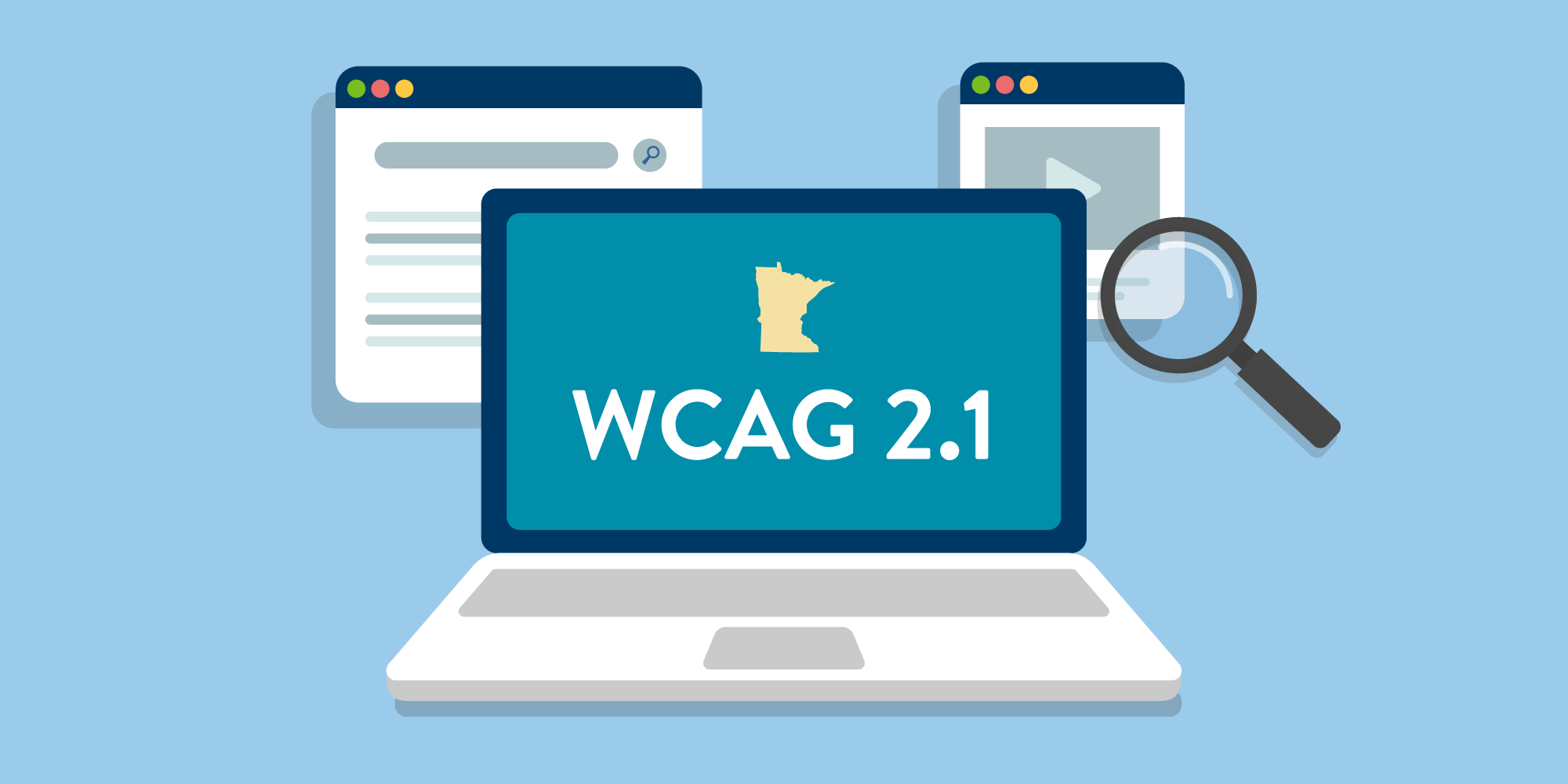5/16/2024 8:00:00 AM

On May 16, the State of Minnesota celebrates /mnit/assets/Digital%20Accessibility%20Day%20Signed%20Proclamation_tcm38-624504.pdfGlobal Accessibility Awareness Day. This year, we’re excited for more than the global holiday. 2024 is a big year for accessibility in Minnesota because we are updating our accessibility standard to better serve Minnesotans.
We’ve had our accessibility standard since 2010. It is based in part on the Web Content Accessibility Guidelines (WCAG) 2.0 Levels A and AA. The guidelines are designed to enhance user experiences, benefit businesses, and ensure equal opportunities. WCAG 2.0 has effectively served Minnesotans by equipping government agencies with clear standards that enable everyone to plan, design, create, and test to ensure accessibility for all our products and services.
This July, WCAG 2.0 is getting a big upgrade. The update, WCAG 2.1, will add 12 new ways to measure the success of our products and services. Everyone has an impact on whether something is accessible. Whether you’re creating a rough draft, defining project requirements, or testing a web page, our work impacts what it takes to make something accessible.
When state employees have better guidance in creating accessible content and easier ways to measure the success of our efforts, everyone benefits. Here’s how:
Digital accessibility promotes inclusivity by ensuring that people with disabilities can participate fully in the digital world. It aims to provide equal opportunities for everyone, regardless of their abilities, to access information and services online.
Many countries have enacted laws and regulations that mandate digital accessibility. For example, the European Accessibility Act, the Accessibility for Ontarians with Disabilities Act, and soon, the updated Americans with Disabilities Act, all use well-established standards such as the Web Content Accessibility Guidelines (WCAG). These laws require organizations to make their digital content accessible to people with disabilities. Failure to comply with these regulations may result in legal consequences.
Ensuring digital accessibility can expand the reach of businesses and organizations. By making products and services accessible, companies can tap into a larger market that includes people with disabilities. This not only aligns with ethical considerations but also makes good business sense.
Digital accessibility often improves the overall user experience for everyone, not just those with disabilities. Designing websites and applications with accessibility in mind typically leads to cleaner, more user-friendly interfaces that benefit all users.
As technology advances, digital interactions become more integral to daily life. Access to online information, services, education, and employment are crucial components of modern society. Ensuring that these digital experiences are accessible allows individuals with disabilities to fully participate in various aspects of life.
Prioritizing digital accessibility is a demonstration of social responsibility. It reflects a commitment to treating all individuals with respect and ensuring that technology is a tool for inclusion rather than exclusion.
Access to digital resources is essential in education. Digital accessibility ensures that students with disabilities have equal access to educational materials, online courses, and learning platforms, promoting an inclusive educational environment.
As populations age, the prevalence of age-related disabilities increases. Digital accessibility becomes crucial in catering to the needs of older individuals, ensuring that they can continue to engage with digital content and services effectively.
We recognize the importance of digital accessibility in creating an inclusive, equitable, and user-friendly digital environment. We are looking forward to the implementation of WCAG 2.1 and its continued advancements in ensuring that everyone, regardless of ability, can access and interact with digital content seamlessly. Together, let's champion accessibility and pave the way for a more inclusive future.
Accessibility
Better Government
Accessibility